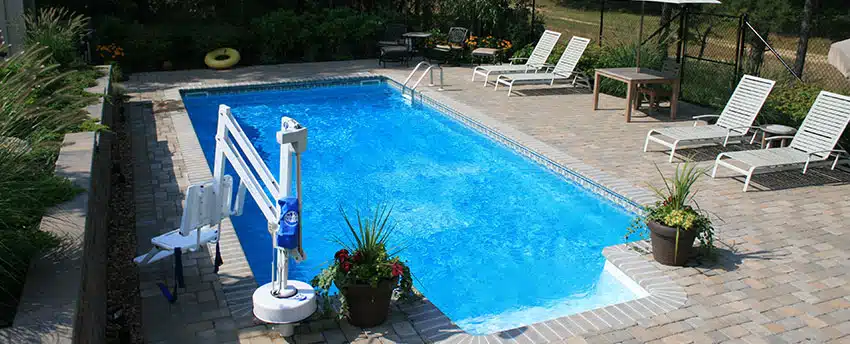There are a lot of advancements in the design of swimming pools, and the new models can be less tailored to your specifications.
One area of advancement is in the pool finishes, which were limited by things like building materials and options for color.
There is a better choice for pool contractors because with the finishes, they can choose to make are now more varied. This way, pools will have a wider range of looks and longer lifespan. What you choose will affect aesthetics, durability, and total pool cost. In case you are planning to have a pool made, you should have the finishes you can choose from. Read on to learn more now.
Plaster
Plaster is the most common and oldest pool finish. It is a combination of water, cement, and silica sand or marble dust.
Plaster gives the pool a classic and smooth appearance, and it is still very popular since this option is more affordable. This finish normally lasts five to seven years before visible etching or chipping occurs.
When you mix it with colored dyes or pigments, it creates drama and dimension.
The common one is medium grey because it creates an ocean blue color and the darker plaster colors create a lot of depth, which enhances the reflective qualities of a lake.
Aggregate Finish
Aggregate finish is a mixture of solid concrete, water, and sand, ornamented with quartz, pebbles, river stones, or colored glass beads. An aggregate finish has a bumpy or smooth texture.
When it comes to cost, an aggregate finish is quite more expensive compared to a plaster finish. However, it has a longer lifespan depending on the material being used; quartz lasts for approximately seven years and pebbles last for 20 years. It also requires less maintenance because it is naturally resistant to algae.
Tile
If you like the finer things, finishing your pool using tiles is the only way to go.
Tile finishes are only available in a few variants and it is a high-end luxury with its price tag. Based on the size/model, tiles can cost up to $50 per square foot.
It is unlike the finishes that can be smoothed and poured over, so tiles are applied to a pool by hand. This personal and intricate touch is another reason for the price tag, but the lasting result makes it more than worth it.
Fiberglass
Fiberglass is low-porosity making it hard for chemicals and algae to adhere, but it makes it slippery as well. It is a very specialized application, with osmosis bubbles if it is not properly applied. When it comes to the wear and tear of gel coat, the fiber might be exposed, for which repair, using paints other than gel coat is not recommended. Similar to a PVC liner, it can be impacted by the presence of chemicals in the water. With the complexity of the application, it is an uncommon sealing solution. But it lasts 16 to 22 years.
Porcelain or Ceramic
This pool lining is the most economical option among tile systems. Porcelain tiles have more resistance compared to stoneware tiles. The reason behind this is that it is not an exclusive product for swimming pools, porcelain or ceramic cladding offers a lot of available finishes on the market. Aside from this, they can be mixed with the material that is used around the pool. However, the format makes it hard to adapt them to difficult shapes and curved or organic geometries. This still makes it an attractive option for many people.
You can contact swimming pool builders Long Island anytime if you want to get the best finish.

